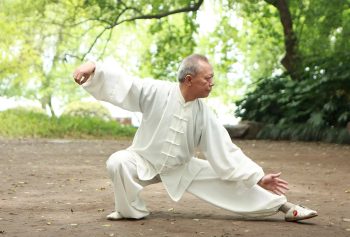When it comes to promoting physical health and fitness, Qigong vs Tai Chi stands out as a powerful contender. But how do Qigong vs Tai Chi compare, and which can help you unlock your health and fitness goals? This article takes you on a captivating journey. Delving into their origins, unveiling their core principles, and revealing the unique benefits they offer.
Get ready to be captivated as we explore and guide you toward the practice that aligns best with your lifestyle and wellness aspirations.
Introduction to Qigong and Tai Chi
Qigong and Tai Chi are ancient Chinese practices rooted in tradition. They encompass slow movements, breathwork, and mental focus. Originating as martial arts, they have evolved into therapeutic exercises.
Qigong focuses on cultivating life energy. While Tai Chi aims for the ultimate mastery of movement.
Both practices seek to harmonize the flow of energy, known as Qi or Chi, through gentle and deliberate motions. For added benefits to these practices, consider getting a certification from professionals like those at Americansportandfitness.com.
Core Principles of Qigong
Qigong focuses on harmonizing the flow of Qi in your body through breathing techniques, posture, and meditation. The main goal is to restore balance, improve circulation, and promote health.
Qigong movements are slow and gentle, making it accessible for people of all ages and fitness levels. This practice helps release tension and stress from the body. It also improves flexibility, balance, coordination, and range of motion.
Core Principles of Tai Chi
While focusing on improving Qi flow, Tai Chi employs more complex and fluid movements. It also incorporates martial arts techniques such as punches, kicks, and defensive moves in its practice.
Tai Chi’s slow and controlled motions help build strength and flexibility. It also helps promote relaxation. It is known to improve physical fitness, increase bone density, and boost immunity.
Benefits of Qigong and Tai Chi
Both Qigong and Tai Chi have a wide range of benefits that promote physical health, mental well-being, and quality of life. These include:
Improved Circulation
The slow and mindful movements in both practices improve circulation in the body. This delivers oxygen and nutrients to the cells for optimal functioning.
Stress Relief
Qigong and Tai Chi are meditative practices that help calm the mind and reduce stress and anxiety. They also promote a sense of well-being by facilitating the release of endorphins which act as natural painkillers.
Enhanced Flexibility and Balance
With regular practice, Qigong and Tai Chi help increase flexibility and balance. This makes them ideal for people of all ages, especially seniors.
Reduced Pain and Inflammation
The gentle movements involved in both practices can help ease pain caused by chronic conditions such as arthritis. They also have anti-inflammatory effects that can aid in managing symptoms.
Boosted Immunity
Qigong and Tai Chi have been linked to boosting the immune system. It reduces inflammation and increases the body’s natural healing abilities.
Qigong vs Tai Chi – Choosing the Best Fit for Your Health and Fitness Journey
When choosing between Qigong vs Tai Chi, consider your preferences, fitness goals, and health needs. Qigong offers relaxation and accessibility. This makes it suitable for beginners or those with specific health issues. Tai Chi, with its martial arts elements, appeals to those seeking a more vigorous workout or a deeper exploration of Chinese martial arts.
Both practices provide significant health benefits and promote improved circulation. It also helps with stress relief, pain management, balance, and cognitive function. Choose the one that suits you best and enjoy the positive impact on your health and wellness.
Browse our blog for more interesting reads.






